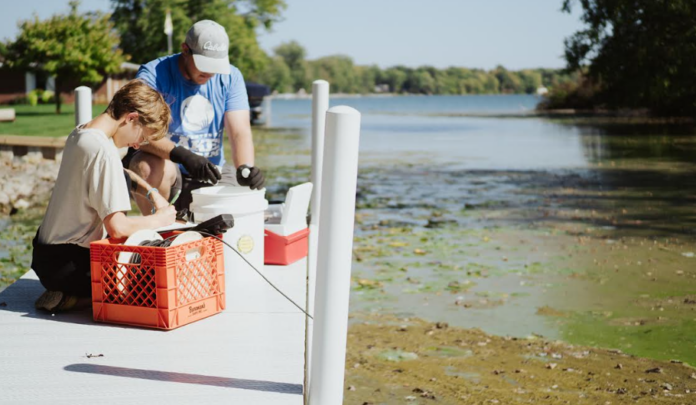
News Release
WINONA LAKE — From June to August, the Lilly Center for Lakes & Streams will publish weekly lake toxin notifications to notify the public about dangerous levels of blue-green algae toxins.
You can sign up for toxin notifications here.
Blue-green algae are a photosynthesizing, increasingly prevalent, potentially toxin- producing family of bacteria natural to freshwater.
The “potentially” part works in two ways: not every species of blue-green produces toxins, and the toxin-producing species do not always produce toxin.
The Lilly Center’s research team collects water samples from the lake during the week;
the toxin team conducts a test to analyze whether the water sample contains the toxin
microcystin. Those registered for notifications can expect an email notification on Friday
morning with a link to the full results.
According to the Indiana Department of Environmental Management, the safety threshold for microcystin toxin is 0.8 parts per billion (ppb). The safety threshold for human health concerns is 8.0 ppb.
Although less than 4 percent of samples in 2023 resulted in microcystin concentrations above the pet safety threshold, the Lilly Center will stay proactive in monitoring this threat. By zooming in on Kosciusko County’s major 14 lakes, the Lilly Center is laser-focused on empowering lake lovers with the information they need to stay safe in the water.
Blue-green algae research and toxin notifications are possible thanks to support from the K21 Health Foundation, Kosciusko County Convention, Recreation & Visitor Commission, and many other individual supporters.
To report a bloom sighting to the Lilly Center, call 574-372-5281 or email lakes@grace.edu.




